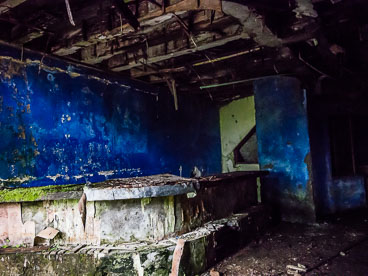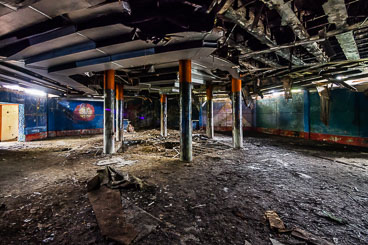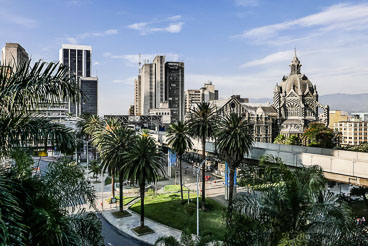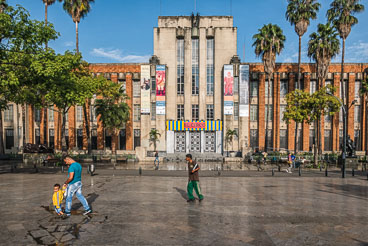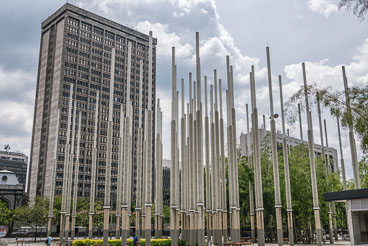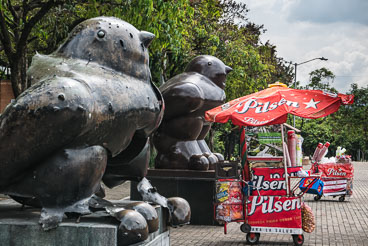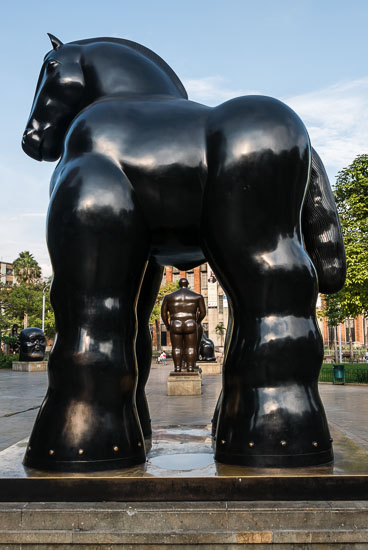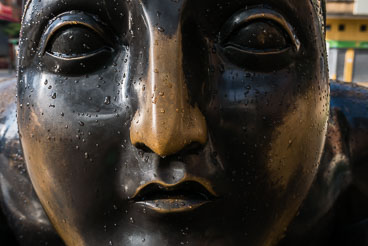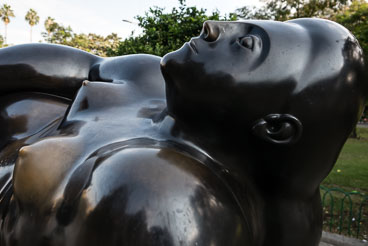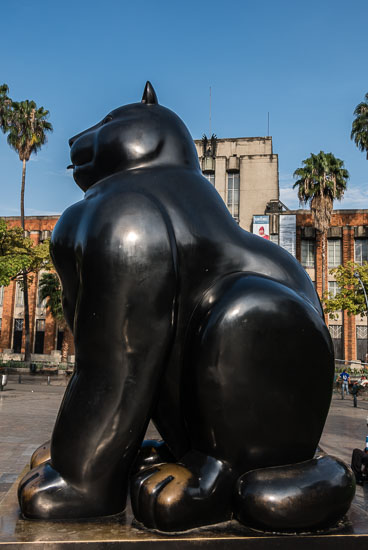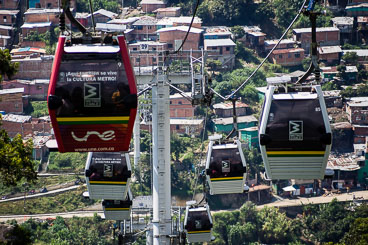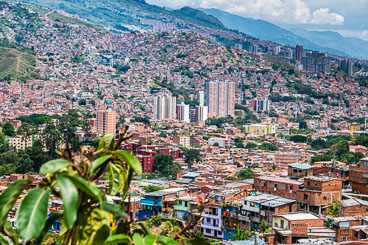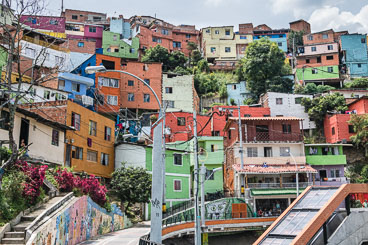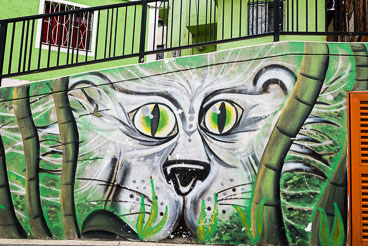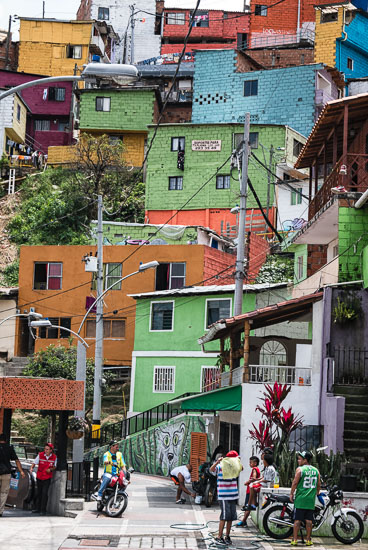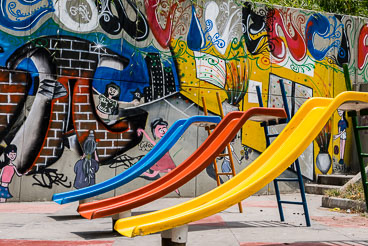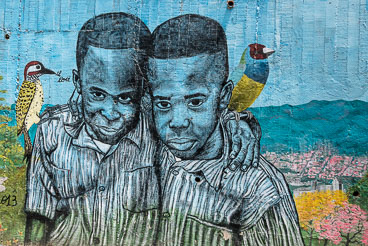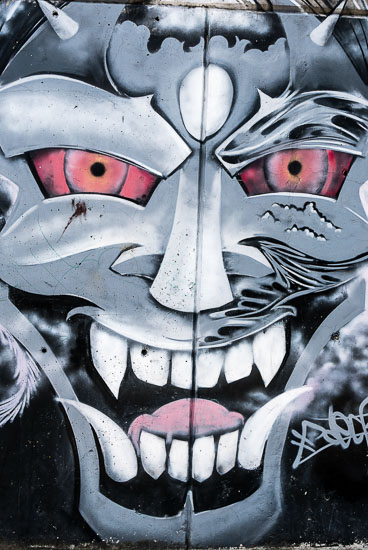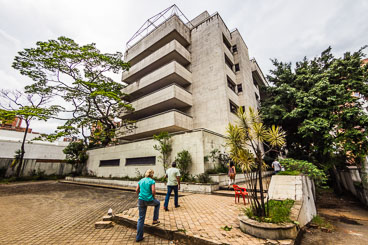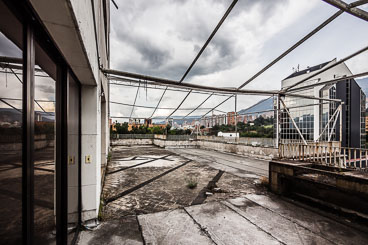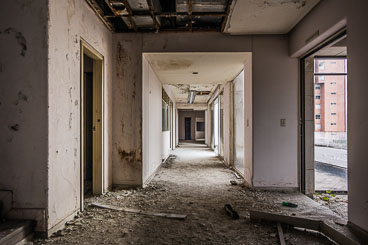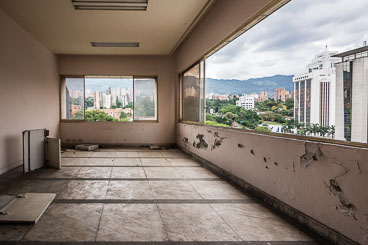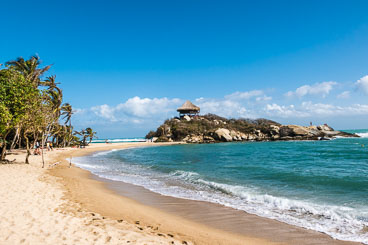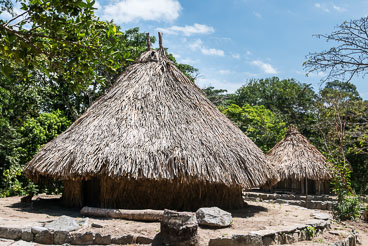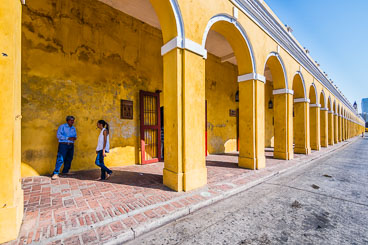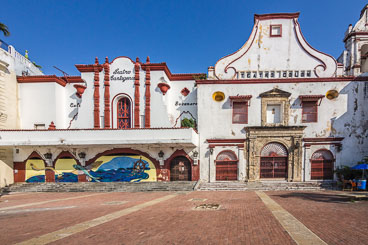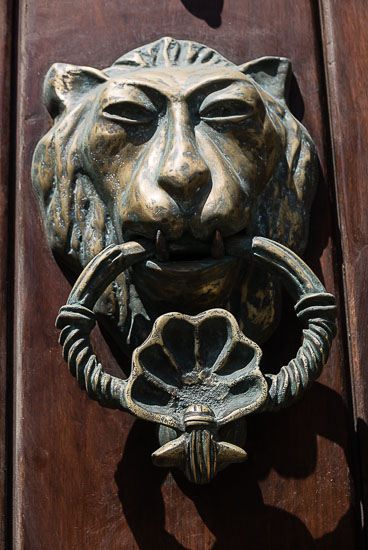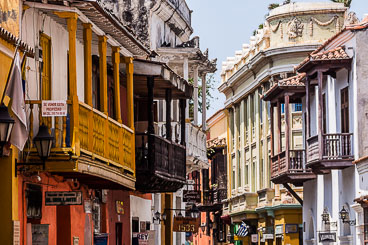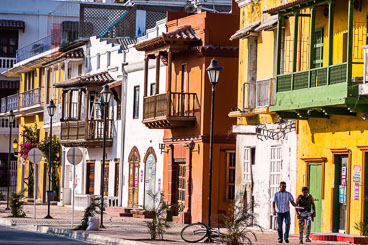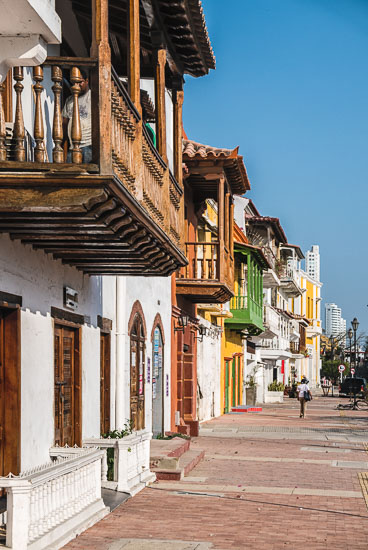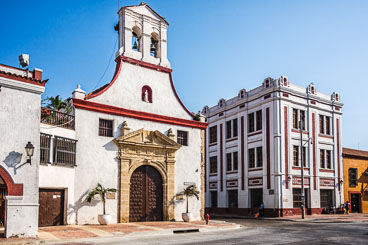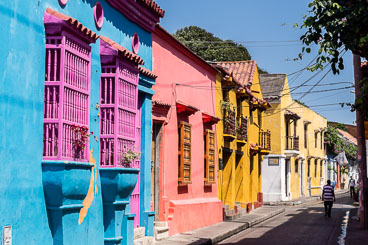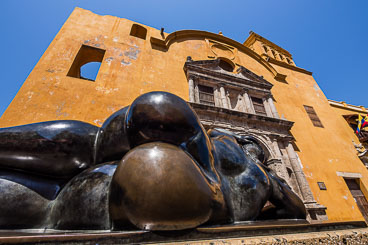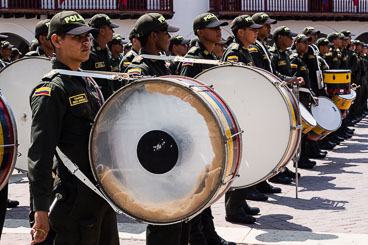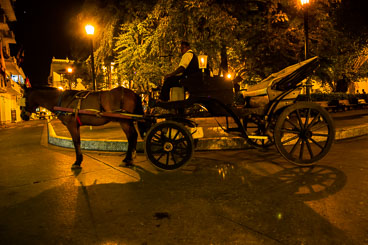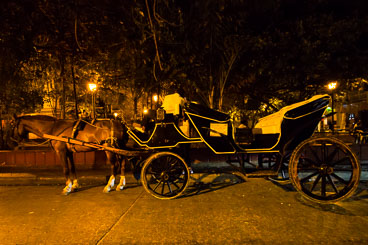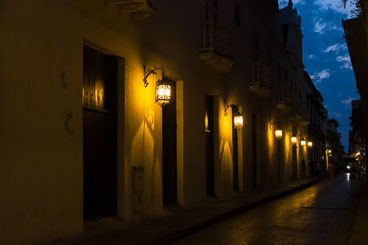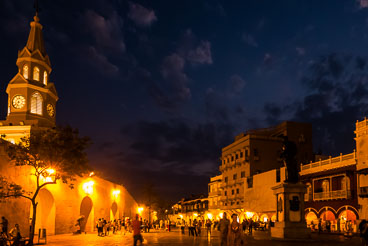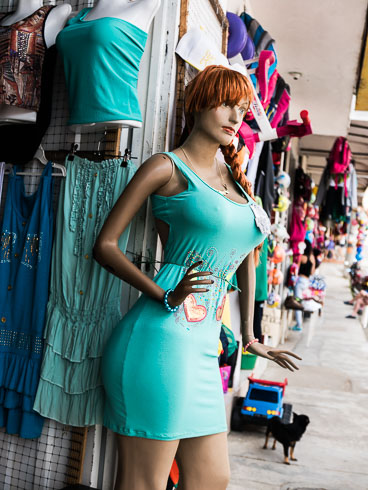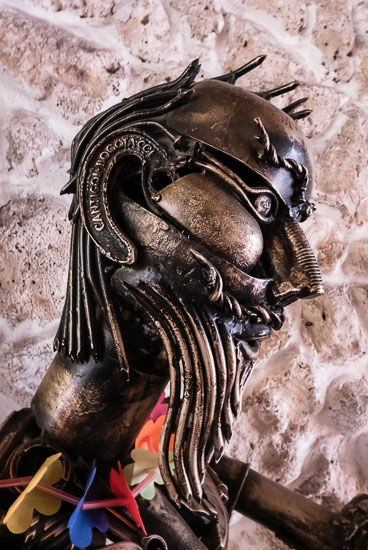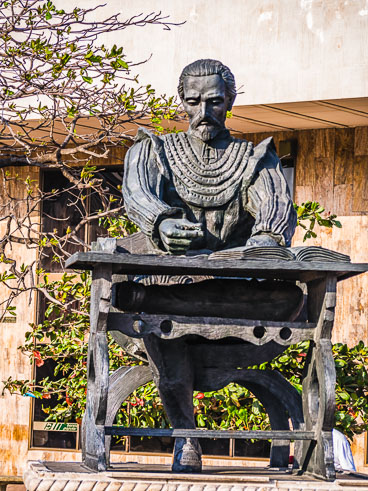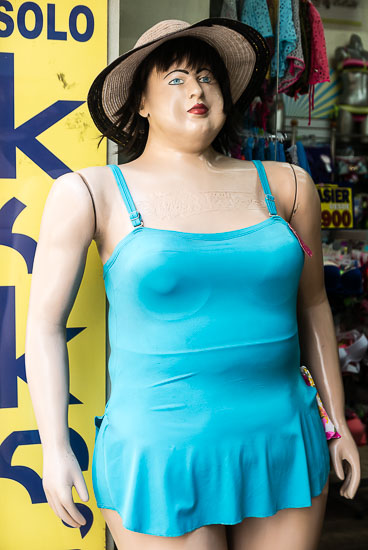Colombia, is a very diverse country. It has colourful people, beautiful beaches, coffee plantations, picturesque towns, rivers, gold, emeralds and lots of fruit. And some of the best graffiti in the world. It has a reputation as a dangerous country with drugs and guerrillas. In some parts of the Colombia that is still true. However a large part, full of attractions, is save to travel. Highly recommended, go before the masses arrive.
Bogota
Bogota is the capital and also the largest city in Colombia. La Candalaria, the historic centre, as in most places in South America originally build by the Spaniards, has several beautiful churches, palaces, government buildings and museums. Especially the gold museum and the Botero museum are very worthwhile. For a bigger view of the city: go for a bike tour. Check out the Seventh Avenue that is lively, full of street performers. On Sundays the whole avenue is closed for traffic and opened for biking. Thousands of people from all ages take to their bike.
Take a ride the cable car or the funicular to the top of Monserrate (3,152 meters). At the top is a church and the view is amazing.
Villavieja / Tatacoa Desert
Villavieja is a charming little town and the nearby Tatacoa Desert makes for nice walks with its colourful sand and towering cacti.
San Augustin
Near the town of San Agustin you’ll find one of the most important archaeological sites in South America. In a beautiful setting there are numerous stone pre-Columbian sculptures, most of them in funeral sites. They are probably the graves of priests, chieftains and other important people. Some of the graves are beautifully situated, like the graves on the hill of the idols, "El Alto de los Ídolos”.
Silva
Silvia is the centre of the Guambiano Indians, considered one of the most traditional indigenous people.
Popayán
Popoyán is one of the most beautiful colonial cities in Colombia. Its nickname is ‘the white city’ and when you arrive it is easy to see why. It used to be a religious and political centre before Cali surpassed it.
Salento and the Cocora valley
This is the coffee region. Salento, is a typical coffee region village with colonial buildings and houses painted in a lot of different colour schemes. The Cocora Valley which is considered one of the finest in the region, dotted with Palmas de Cera (waxpalm), upto 55 meters high.
In the valley you also can find a villa that belonged to former druglord Carlos Lehder, one of the founders of the Medellin Cartel. It is a nice place for some urban exploring. Carlos held a tiger and other wild animals and had a private discotheque for his wild parties. Everything is ripped apart in search for hidden treasures.
Medellin
The second city of Colombia, Medellin is called the city of eternal spring because of its climate. In the centre is the Botero park, an exhibition of the artists statues, all in his distinct style. In a park not far from there are two statues of a bird. The original statue was torn up in a bomb attack killing 25 people. Botero made a new one that is placed alongside it. Medellin has a metro and a metro-cable, especially the latter making for a nice ride. And there is a part of town, Comuna 13 that can be visited by an escalator. This experiment should provide better access to and from the neighbourhood, improve the quality of life and, as a consequence, reduce crime in what used to be one of the most dangerous parts of Medellin. The area directly surrounding the escalator is quite safe and gang related activities have goon down. The graffiti is quite nice, more raw than in somewhat arty Bogota.
Medellin is also the city of Pablo Escobar, a man both loved and feared by his people. He spent millions of dollars building hospitals, schools and churches for the poorer communities in Medellin. But he also had hundreds of people killed during his war with the government. His former residence, the Monaco building, now stripped down in search for hidden treasures can be visited. Pablo lived in the two storey penthouse, the other floors were for his bodyguards.
Tayrona
Tayrona National Park is an unspoiled natural paradise with some of the best beaches of the Caribbean coast, crystal clear water and a hinterland full of jungle. The walk to the Indian village of Pueblito is quite worthwhile, though the village itself is underwhelming.
Cartagena
Cartagena breathes history. The novel "Love in the time of Cholera" by Colombian writer Gabriel García Márquez takes place here. An UNESCO Heritage city from where in colonial times gold and other riches were transported to Spain. It is easy to spend hours wandering through the old part of town with narrow streets, colonial houses, shady patios and overhanging balconies. It has nice cafes and restaurants and an overall pleasant atmosphere. A nice place for just hanging around for a while.
- 1
- 2
- 1
- 2

